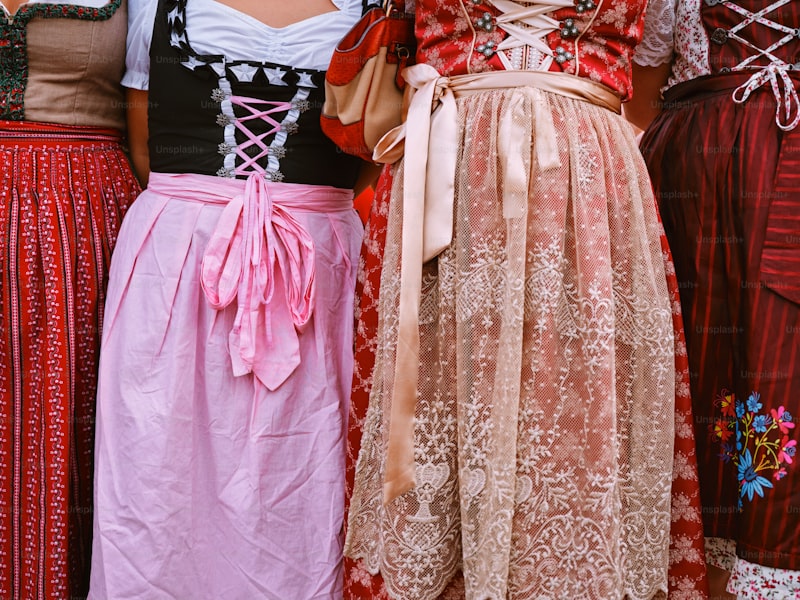What to Look for in Second-Hand Dresses: A Comprehensive Guide
Introduction to Second-Hand Dresses
In today's fashion landscape, second-hand dresses have gained immense popularity. Shoppers are increasingly aware of sustainable fashion and the unique styles that vintage pieces can offer. However, purchasing second-hand dresses comes with its own set of considerations. This article will walk you through what to look for in second-hand dresses, ensuring you make the best choices for your wardrobe.
The Benefits of Buying Second-Hand Dresses
Before diving into the specifics of what to look for, it’s essential to understand the advantages of second-hand shopping:
- Cost-Effective: Second-hand dresses typically come at a fraction of their original retail price, allowing you to splurge on quality without breaking the bank.
- Sustainability: By purchasing second-hand items, you contribute to reducing textile waste, promoting a more sustainable fashion industry.
- Unique Finds: Vintage dresses can provide a style that you won't find in mainstream retail stores, making your wardrobe truly unique.
- Quality: Many older dresses are made from higher-quality materials, ensuring durability and longevity.
Key Features to Examine in Second-Hand Dresses
When shopping for second-hand dresses, here are several key features you should examine:
| Feature | Details |
| Fabric Quality | Check for the type of fabric and its condition. Look for natural fabrics like cotton, silk, or wool for longevity. |
| Stitching and Seams | Inspect the stitching for any loose threads or separations that may indicate a need for repair. |
| Color and Print | Look for any fading or discoloration, and ensure that prints are intact without any noticeable stains. |
| Size and Fit | Make sure to try on the dress or check the measurements, as sizes can differ significantly between brands and eras. |
| Brand Reputation | Consider the designer brand; higher-end brands may offer better craftsmanship and materials. |
Fabric Quality
The fabric quality of second-hand dresses can be a significant indicator of how long the dress will last. Look for natural materials such as cotton, silk, or linen, which tend to withstand the test of time better than synthetic fabrics. Remember, even if a dress is second-hand, its fabric's durability can affect how often you wear it and its overall value in your wardrobe.
Stitching and Seams
Examine all stitching and seams of the dress carefully. Loose threads, frayed edges, or seams that are coming apart can indicate that the dress might not last long. High-quality dressmakers typically employ reinforced stitching, which extends the lifespan of a garment. Make sure to check the interior construction as well!
Color and Print
Color integrity is crucial for the overall aesthetics of the dress. Inspect for any fading, which is common in older dresses, especially with bright colors. Additionally, check for stains or discoloration that may not wash out. When it comes to print, ensure that it is clear and vibrant; blurred prints may affect how the dress appears when worn.
Size and Fit
Sizes can vary greatly, especially with vintage dresses. Always check the size and fit before purchasing. If possible, try the dress on to ensure it flatters your body type and is comfortable to wear. If shopping online, be wary of size charts and measure your bust, waist, and hips to find a suitable fit.
Brand Reputation
Certain brands are known for their exceptional craftsmanship and material quality. Research these brands before making a purchase, as recognizable names may indicate a higher level of durability and style. Investing in well-made dresses can enhance your wardrobe significantly and may retain more value over time.
Where to Find Quality Second-Hand Dresses
Finding quality second-hand dresses can be an adventure. Here are some popular places to begin your hunt:
- Thrift Stores: Local charity shops often have affordable options, but be prepared to dig through a lot of items.
- Consignment Shops: These stores sell second-hand items on behalf of the owners and usually have a more curated selection.
- Online Marketplaces: Websites like eBay, Poshmark, and Depop are great for finding unique pieces often at lower prices.
- Vintage Shops: Specializing in vintage styles, these stores often stock high-quality dresses from various eras.
- Community Events: Local swap meets, garage sales, or pop-up markets can be unique places to find hidden gems.

Tips for Caring for Your Second-Hand Dresses
Once you find your perfect second-hand dress, it’s essential to take care of it properly to maintain its beauty and longevity. Here are some helpful care tips:
- Proper Washing: Always read washing instructions to prevent damaging the fabric. When in doubt, hand wash in cold water.
- Storage: Hang your dresses in a cool, dry place to avoid wrinkles and fabric degradation.
- Pre-Treat Stains: If you notice stains, treat them immediately with an appropriate cleaner to prevent them from setting.
- Use a Garment Bag: For delicate materials, use a garment bag when storing or transporting the dress.
- Regular Maintenance: Check for any needed repairs, like loose buttons or seams, and address them promptly.
Conclusion
Buying second-hand dresses can be an enjoyable and sustainable way to enhance your wardrobe. By understanding what to look for, you can find unique pieces that not only suit your personal style but also endure the test of time. Remember to pay attention to fabric quality, stitching, color, fit, and the reputation of the brand. Make the most of your second-hand finds and embrace the rich history each dress carries.
As you embark on your shopping journey, keep these considerations in mind, and you’ll certainly reap the benefits of your efforts. Happy hunting!